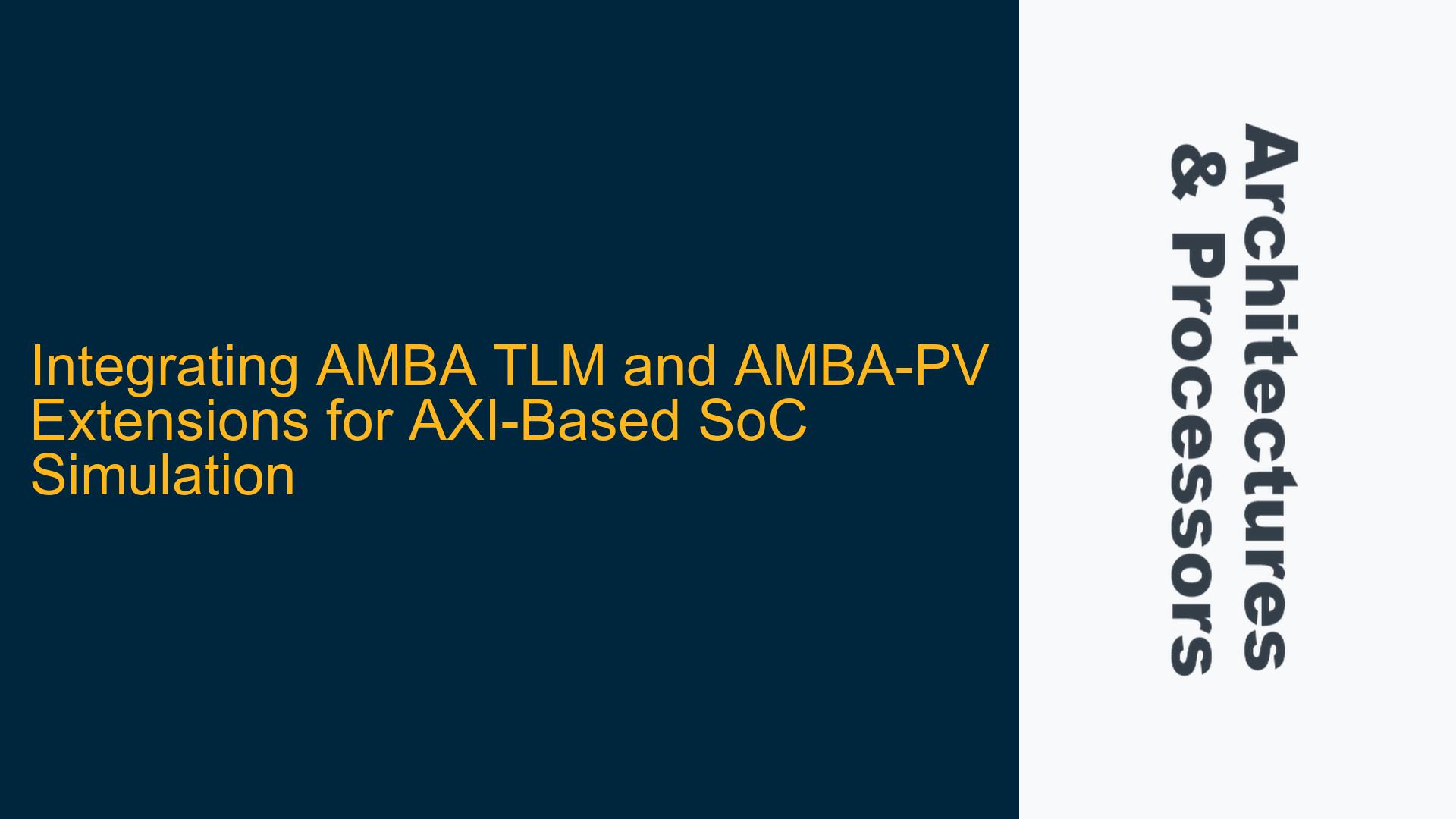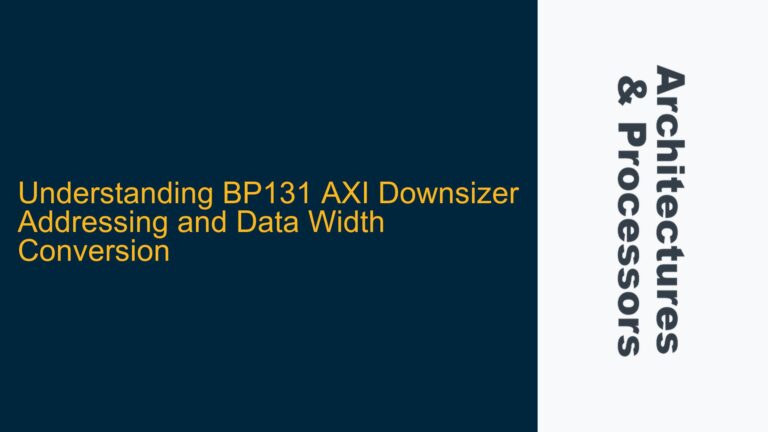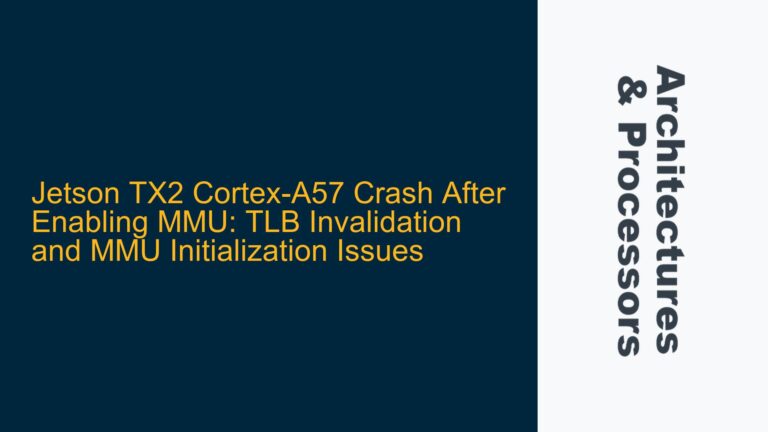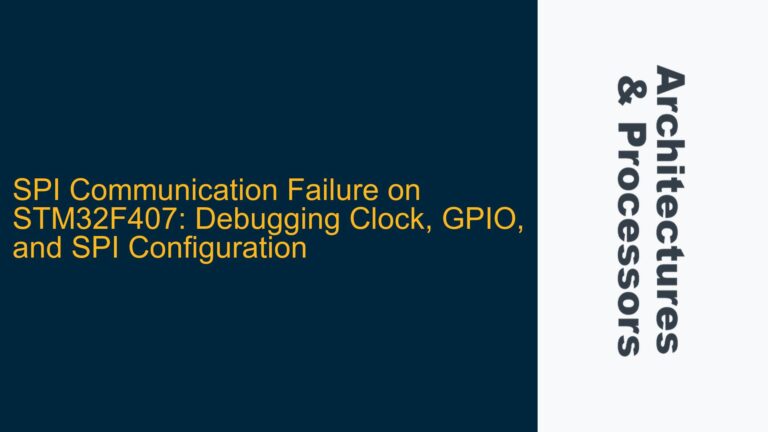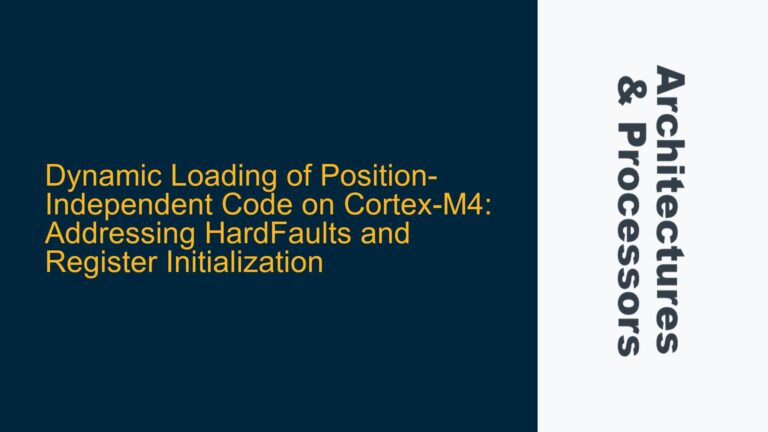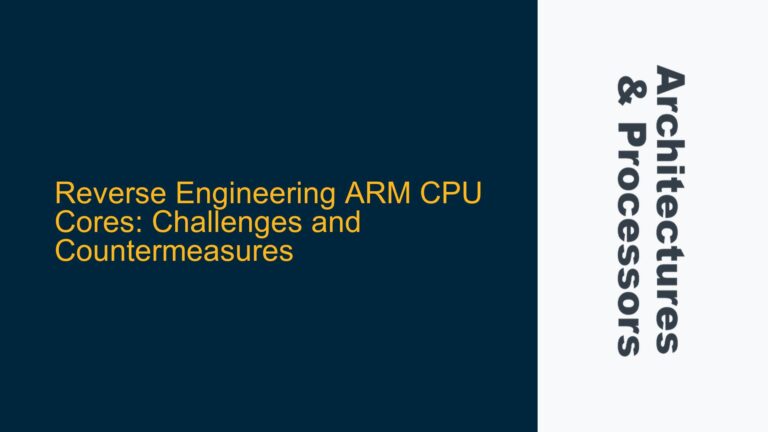AMBA TLM and AMBA-PV Compatibility Challenges in AXI-Based Systems
When designing and simulating ARM-based SoCs, engineers often leverage the AMBA TLM library and AMBA-PV extensions to model complex systems. However, integrating these two frameworks can present significant challenges, particularly when attempting to simulate AXI-based systems with multiple masters and slaves. The AMBA TLM library is designed for use with Cycle Models or custom AT/CA models, while AMBA-PV extensions are tailored for Fast Models or custom LT models. This fundamental difference in modeling styles and intended use cases creates a compatibility gap that must be bridged to achieve a functional simulation environment.
The core issue arises when attempting to connect components modeled using AMBA TLM with those modeled using AMBA-PV extensions. AMBA TLM operates at a higher level of abstraction, focusing on cycle-accurate (CA) or approximately-timed (AT) models, which are essential for detailed performance analysis and timing verification. On the other hand, AMBA-PV extensions are optimized for loosely-timed (LT) models, which prioritize simulation speed over cycle accuracy. This discrepancy in timing models necessitates the creation of a bridge component to facilitate communication between the two domains.
In the context of AXI-based systems, the challenge is further compounded by the need to replicate AXI-specific attributes and behaviors across the bridge. AXI, being a high-performance, high-frequency protocol, requires precise handling of burst transactions, out-of-order completion, and multiple outstanding transactions. Ensuring that these AXI-specific features are correctly modeled and synchronized across the AMBA TLM and AMBA-PV boundary is critical for accurate simulation results.
Misalignment Between AMBA TLM and AMBA-PV Modeling Paradigms
The primary cause of the integration challenge lies in the inherent misalignment between the modeling paradigms of AMBA TLM and AMBA-PV extensions. AMBA TLM is designed to support cycle-accurate and approximately-timed models, which are essential for detailed timing analysis and performance optimization. These models require precise synchronization of signals and transactions, often at the clock cycle level, to accurately reflect the behavior of the hardware.
In contrast, AMBA-PV extensions are optimized for loosely-timed models, which prioritize simulation speed and are typically used for early software development and system validation. Loosely-timed models abstract away many of the low-level timing details, focusing instead on functional correctness and high-level transaction flow. This abstraction allows for faster simulation but introduces challenges when interfacing with cycle-accurate or approximately-timed models.
The misalignment is particularly evident in the handling of AXI-specific attributes. AMBA TLM models may include detailed representations of AXI signals such as AWVALID, AWREADY, WVALID, WREADY, BVALID, and BREADY, which are critical for cycle-accurate simulation. AMBA-PV extensions, however, may abstract these signals into higher-level transaction attributes, such as AMBA_PV_INCR for burst type or AMBA_PV_OKAY for transaction response. This abstraction can lead to inconsistencies when attempting to connect the two modeling styles, as the detailed timing and signal-level information required by AMBA TLM may be lost or misrepresented in the AMBA-PV domain.
Another contributing factor is the lack of a standardized bridge component to facilitate communication between AMBA TLM and AMBA-PV models. While both frameworks provide extensive documentation and examples, there is no out-of-the-box solution for integrating the two. Engineers must therefore design and implement custom bridge components, which requires a deep understanding of both modeling paradigms and the specific requirements of the AXI protocol.
Designing a Custom Bridge for AMBA TLM and AMBA-PV Integration
To address the compatibility challenges between AMBA TLM and AMBA-PV extensions, a custom bridge component must be designed and implemented. This bridge serves as an intermediary between the cycle-accurate or approximately-timed models of AMBA TLM and the loosely-timed models of AMBA-PV, ensuring that AXI-specific attributes and behaviors are correctly translated and synchronized across the boundary.
The first step in designing the bridge is to define the interface requirements for both the AMBA TLM and AMBA-PV sides. On the AMBA TLM side, the bridge must support the detailed signal-level interface required for cycle-accurate or approximately-timed simulation. This includes handling AXI signals such as AWVALID, AWREADY, WVALID, WREADY, BVALID, and BREADY, as well as managing burst transactions, out-of-order completion, and multiple outstanding transactions.
On the AMBA-PV side, the bridge must translate these detailed signals into higher-level transaction attributes that can be processed by loosely-timed models. This involves mapping AXI-specific attributes such as AMBA_PV_INCR for burst type, AMBA_PV_OKAY for transaction response, and AMBA_PV_EXOKAY for exclusive access responses. The bridge must also handle the synchronization of transaction timing, ensuring that the loosely-timed models receive transactions in the correct order and with the appropriate timing constraints.
The bridge implementation should include a state machine to manage the translation and synchronization of transactions between the two domains. This state machine must account for the differences in timing models, ensuring that transactions are correctly aligned and that no data is lost or corrupted during the translation process. Additionally, the bridge should include error handling mechanisms to detect and report any inconsistencies or mismatches between the AMBA TLM and AMBA-PV models.
To validate the bridge, a comprehensive testbench should be developed, including test cases that cover a wide range of AXI transaction types and scenarios. This testbench should include both functional and timing checks to ensure that the bridge correctly translates and synchronizes transactions across the AMBA TLM and AMBA-PV boundary. The testbench should also include corner cases, such as back-to-back transactions, out-of-order completion, and error responses, to verify the robustness of the bridge implementation.
In conclusion, integrating AMBA TLM and AMBA-PV extensions for AXI-based SoC simulation requires a custom bridge component to address the compatibility challenges between the two modeling paradigms. By carefully designing and implementing this bridge, engineers can achieve accurate and efficient simulation of complex AXI-based systems, enabling thorough validation and optimization of their SoC designs.
